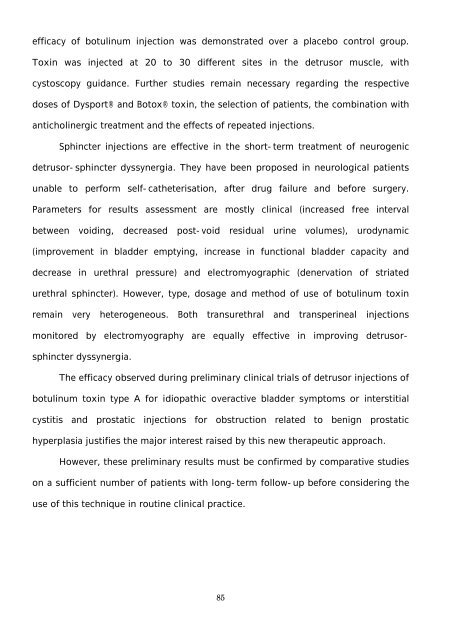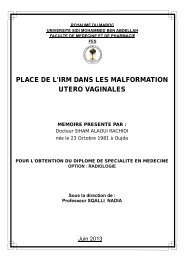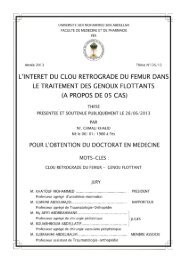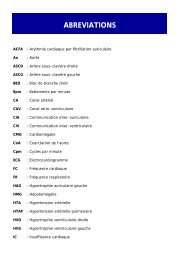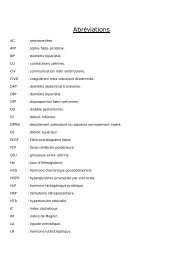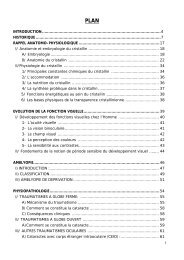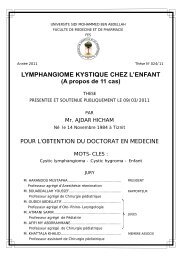Graphique 1 - Faculté de Médecine et de Pharmacie de Fès
Graphique 1 - Faculté de Médecine et de Pharmacie de Fès
Graphique 1 - Faculté de Médecine et de Pharmacie de Fès
Create successful ePaper yourself
Turn your PDF publications into a flip-book with our unique Google optimized e-Paper software.
efficacy of botulinum injection was <strong>de</strong>monstrated over a placebo control group.<br />
Toxin was injected at 20 to 30 different sites in the <strong>de</strong>trusor muscle, with<br />
cystoscopy guidance. Further studies remain necessary regarding the respective<br />
doses of Dysport® and Botox® toxin, the selection of patients, the combination with<br />
anticholinergic treatment and the effects of repeated injections.<br />
Sphincter injections are effective in the short-term treatment of neurogenic<br />
<strong>de</strong>trusor-sphincter dyssynergia. They have been proposed in neurological patients<br />
unable to perform self-cath<strong>et</strong>erisation, after drug failure and before surgery.<br />
Param<strong>et</strong>ers for results assessment are mostly clinical (increased free interval<br />
b<strong>et</strong>ween voiding, <strong>de</strong>creased post-void residual urine volumes), urodynamic<br />
(improvement in blad<strong>de</strong>r emptying, increase in functional blad<strong>de</strong>r capacity and<br />
<strong>de</strong>crease in ur<strong>et</strong>hral pressure) and electromyographic (<strong>de</strong>nervation of striated<br />
ur<strong>et</strong>hral sphincter). However, type, dosage and m<strong>et</strong>hod of use of botulinum toxin<br />
remain very h<strong>et</strong>erogeneous. Both transur<strong>et</strong>hral and transperineal injections<br />
monitored by electromyography are equally effective in improving <strong>de</strong>trusor-<br />
sphincter dyssynergia.<br />
The efficacy observed during preliminary clinical trials of <strong>de</strong>trusor injections of<br />
botulinum toxin type A for idiopathic overactive blad<strong>de</strong>r symptoms or interstitial<br />
cystitis and prostatic injections for obstruction related to benign prostatic<br />
hyperplasia justifies the major interest raised by this new therapeutic approach.<br />
However, these preliminary results must be confirmed by comparative studies<br />
on a sufficient number of patients with long-term follow-up before consi<strong>de</strong>ring the<br />
use of this technique in routine clinical practice.<br />
85


